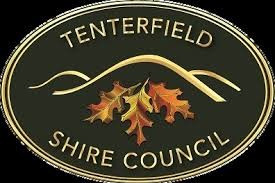Community & Business
18 September, 2024
Musical chairs, but 'Tenterfield Seven' likely returned
Tenterfield elections

Final counting is being completed in the Tenterfield Shire Council elections as we go to press, with the bottom line being remarkably little change in the ranks who will assemble for the first new meeting of council next week. Seven of the nine councillors left standing in the Rouse Street chambers stood for reelection, with the results at this stage indicating that all seven will be returned. Ward B was uncontested meaning that new councillor Roger Turner joining incumbent mayor Bronwyn Petrie as elected without a vote being fired. Ward B stood out from the other ‘electorates’ this term due to the retirement of John McNish who has been a councillor in the region for a period stretching back to the 1990s. Cr McNish has regularly held the role of deputy mayor, including during the last term. There was not one but two cases of musical chairs this term, with long-time mayor Peter Petty shifting from Ward A to Ward C, and Tom Peters shifting from C to E. Both look likely to be returned.
Just because she has been reelected doesn’t mean that Cr Petrie will be the shire’s mayor next Wednesday. The shire’s major, much like the prime minister, is not elected by voters but by the politicians who sit in the chamber. Like the other councillors, the mayor stands for election as a councillor first and foremost.
Unlike the Southern Downs system, however, the shire’s councillors are elected from ‘electorates’ not from the shire’s voters as a whole. The electorates, or ‘wards’ are numbered from A to E—D and E covering the town itself, and the others wrapped around the town, with A to the north, B to the east, and C to the west. It’s a rare pattern even in NSW, where the ward system is generally only seen in big shires—Sydney city for example has wards. Tenterfield Shire has also got more politicians than the Southern Downs—with ten, rather than eight elected councillors.
In Ward A, Tim Bonner looks set to be extremely comfortably returned with almost 59% of the vote and Gregory Purcell likely to take the second seat in council, with 24.08% of first preference votes, with Ben Raymond third with 17.28%.
Ward C saw Peter Petty re-elected with almost 41% of the vote, with Peter Murphy also being re-elected with close to 36% of the vote.
Ward D will have a new councillor Owen Bancroft, joining the sitting councillor Kim Rhodes, Owen leading by just 6 votes on the primary vote.
Ward E has 977 votes in theory, and of the 727 counted, Greg Sauer home and hose with 67.24%, and Tom Peters (17.38%) just edging Matthew Sing (15.38%) but neither have quite got the quota they need at this stage. The story of Tom Peters is interesting—he has been a councillor for 18 years now, but in Wards B and C—so this would be his third ‘electorate’.
Tenterfield Shire is quite distinct from its neighbouring shire north of the border, with a much simpler bureaucratic structure—just two broad divisions, services (which handles the traditional delivery side of the shire, like roads and rubbish, and corporate, that handles everything else plus the library. On the political side it’s also strikingly different to the Southern Downs. One factor is stability—the shire featured Peter Petty as mayor for nine terms (including one time when he got the top job when his name was drawn from a hat in 2016), a number that would be astonishing north of the border, but with much lower salaries (more like honorariums) the shire is relatively less political and contested than the patterns we’ve seen in the Southern Downs. However, in one sense it is distinctly MORE political—there is half an hour set aside at each meeting for locals to address the council on issues up for consideration at the meeting, within set constraints, something that almost never occurs in Queensland.
The shire has been one of the more financially troubled councils in the New England region, saddled with much greater restrictions on the money it is allowed to draw from the region in the form of rates, but no matching reduction in the expectations placed on the shire’s shoulders.
